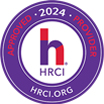
The use of this seal confirms that this activity has met HR Certification Institutes (HRCI) criteria for recertification credit pre-approval.
This activity has been approved for
1.25 HR
(General) recertification credit hours toward aPHR, PHR, PHRca, SPHR, GPHR, PHRi and SPHRi recertification through HR Certification Institute (HRCI). Please make note of the activity ID number on your recertification application form. For more information about certification or recertification, please visit the HR Certification Institute website at www.hrci.org." ...more
Overview
Companies set targets for revenue and profitability. But they forget that to achieve these, they need to have supported operations that are needed in order to make these things a reality. They also feel that changes are needed in their operation to reduce costs, improve productivity, make replacements to outdated operations and equipment and meet safety requirements. These are often neglected, and projects are established that do not meet the real needs of the organization resulting in potentially more issues and not meeting the real needs of the company.
To prevent this from happening, companies need to develop thorough and comprehensive Operational Strategic plans. These are done once the overall business plan is developed so it ties with the company’s aspirations and real needs. It also provides directions for the company that makes any project plans align with the Strategic Plan of the organization.
In this webinar, we cover:
Verification of the company’s business plan. If this is not done, we may be trying to create an Operational Strategic plan for something that is not realistic. This can cause great harm to a company.
Identification of all programs and projects from all functional areas including non-Operational ones such as Sales, Marketing, R&D, EHS and Quality. We need to know what is already going on in the company.
Determination of all real company needs such as Capacity, Replacement, cost reduction, EHS and safety. We need to know what is really needed.
Prioritizing what is needed by year for the next 3 to 5 years.
Development of a Capital plan for all needs, by year.
Review and verification by executive management of the findings and eventual plan. If there are any inaccuracies or management feels that this is too much to take on, revisions must be made, including the business plan.
Once the plan is established, we need to cover what needs to be done next. Having a plan is one thing, but enacting is something different. Many times, plans are developed and then never worked on. All the hard work is for naught and then companies wonder why they are marching in place of falling behind. Included in this is establishing a one-year plan that takes the first year of the strategic plan and makes it actionable.
Strategic plans are good for only one to two years. Business changes so quickly and sometimes dramatically that the plan is out of date within that timeframe. It is then incumbent upon the company to update the plan based on what has occurred during that timeframe.
This course will give the basics and importance on developing an Operational Strategic plan. To get proficient at doing so will require additional studies and then actually creating an Operational plan.
Why you should Attend
In dealing with companies that feel they are having operational issues; they need to determine how whatever they want to change relates to and impacts on their Operational Strategic plan. Unfortunately, many do not have such or it is outdated. While it is great to have an idea how much Revenue and Profit, they want, it is equally important to know how they are going to achieve this by the operational support needed. Without this, they may be following a path that will not only not get them there but may cause great harm to the business.
This webinar ties the support for the Business Strategic plan to the operations of the organization. It allows companies to see what will be need in terms of men, machinery, facilities and potentially even materials to provide that necessary support. It also allows for prioritization of operational projects for Growth, Replacement, Safety and Cost Reduction (Profit Improvement) to make the Business plan realistic and achievable.
This webinar provides the reasons why an Operational plan is necessary and the basics on how to construct one. It also emphasizes that any plan is good for mostly one to two years and then it must be updated as any good strategic plan should be.
Smart organizations will realize this importance and will want to take the first step to making this a reality.
Areas Covered in the Session
- What is an Operational Strategic plan
- How does it tie to and support the company’s business plan?
- Identifying where the company is growing
- Determining current and future capacity requirements
- Establishing a 3-to-5-year plan that covers Facilities, Equipment, Manpower, Capital costs
Who Will Benefit
- VP Operations
- Director of Operations and Engineering
- Facility Managers
- Strategic Planning Managers and employees
Speaker Profile
Peter H. Christian was a founding partner and president of espy, a business consulting firm in Northeastern PA. Previously he was an Executive at Crayola Corporation. He has worked with 300+ clients in business development, profit improvement, operations, IS selection and implementation, and Project Management.
He has 40+ years of experience in strategic and facility planning, CI, lean, and supply chain. He has helped companies to realize millions of dollars in cost reductions and profit improvements, adding and retaining thousands of jobs. He has authored the Amazon bestselling business books, "What About the Vermin Problem?" and "Influences and Influencers" (4 out of 4-star review on Online Book club) and is published in a variety of professional magazines.
